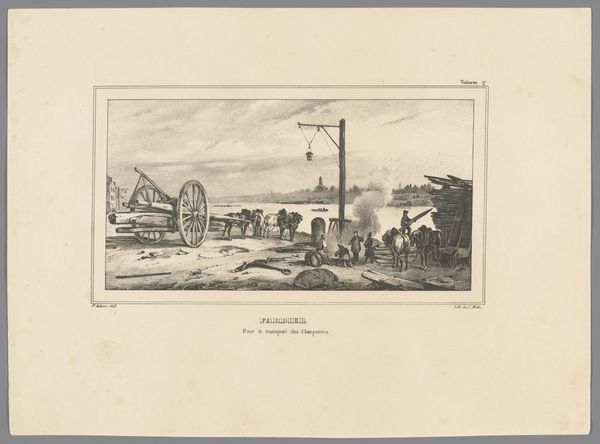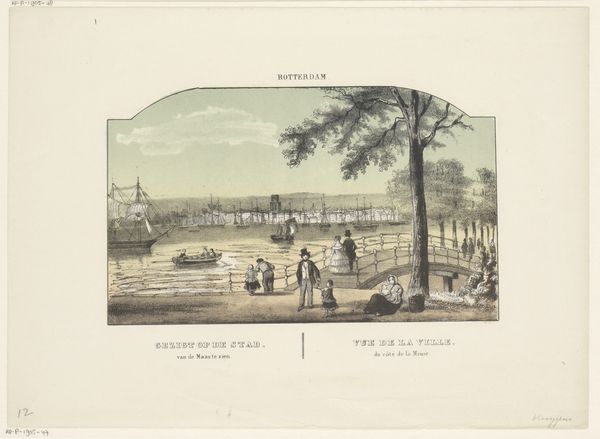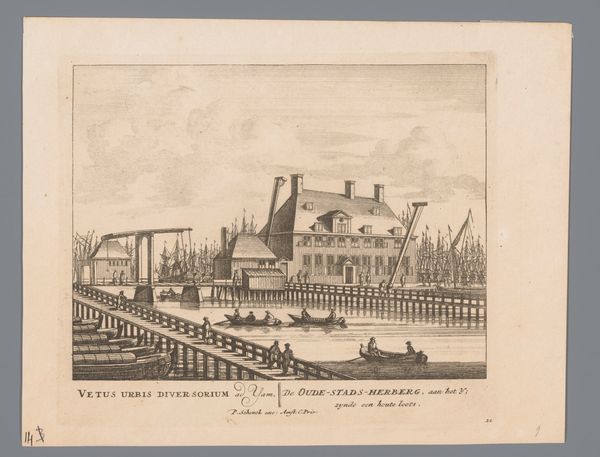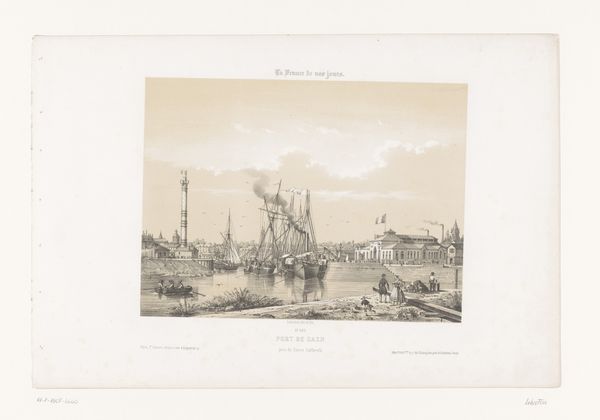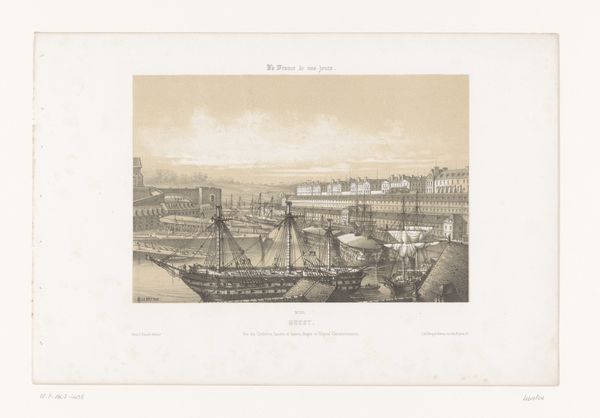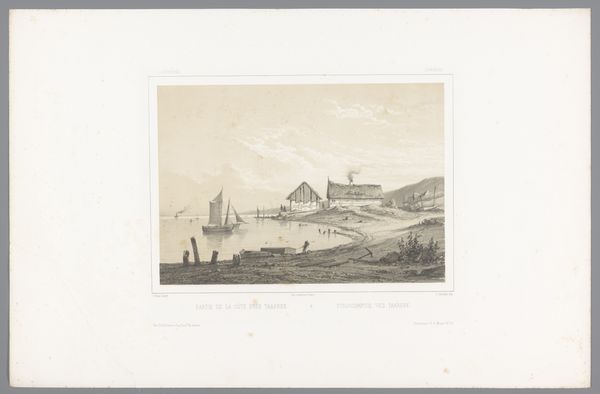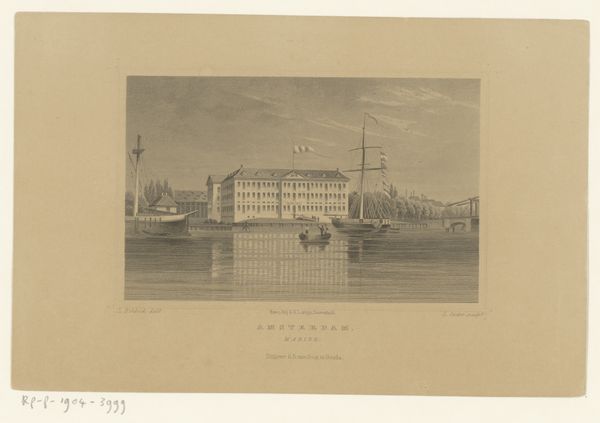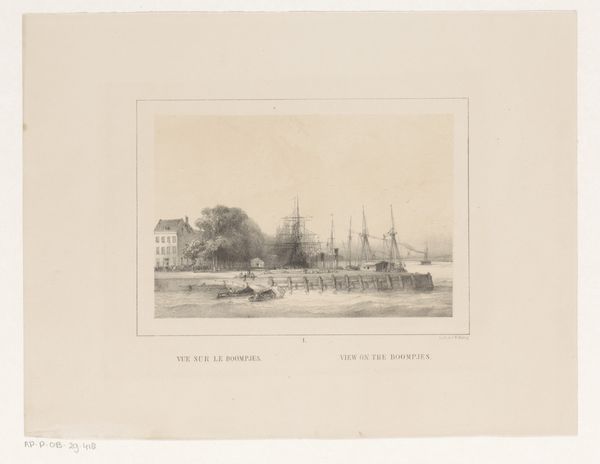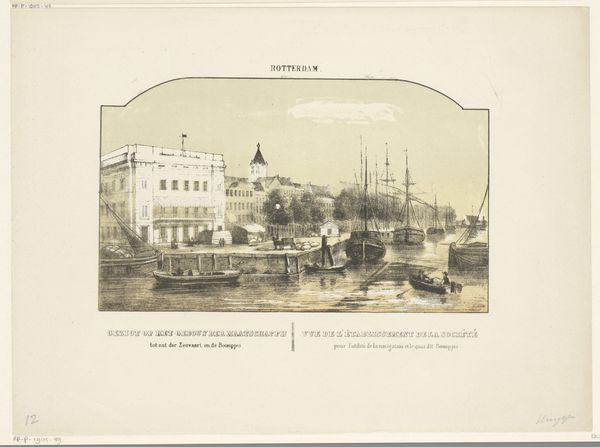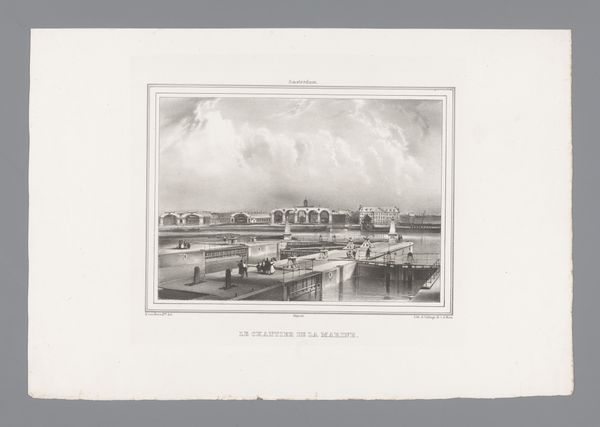
drawing, print, etching
#
drawing
# print
#
etching
#
landscape
#
cityscape
#
genre-painting
Dimensions: height 275 mm, width 377 mm
Copyright: Rijks Museum: Open Domain
Curator: This etching by Frederik Lodewijk Huygens, titled "Zeemanshuis in Rotterdam," dates roughly from 1812 to 1887. It's currently housed here at the Rijksmuseum. Editor: My immediate impression is the dominance of vertical lines – the towering masts, the stark facades, even the trees are rigid. There’s a certain austerity, even in this port scene, softened only slightly by the presence of figures. Curator: Absolutely, the structural composition emphasizes that verticality. The framing further reinforces this geometric austerity, the gentle arch overhead acts as a proscenium. But, let's delve into the technique itself. The artist employs delicate, controlled lines, establishing a certain representational exactness, primarily the architectural and nautical engineering. Editor: I am drawn more to the material history implied within these precisely etched lines. Etching, as a printmaking method, enables replicability – it's a process that aligns this image with broader consumption, with access for perhaps more than just elite collectors. Who would have purchased it, displayed it? It offers insights into that process. Curator: Intriguing question. We see that interplay of high art and industrial replication you mentioned in Huygens' precise articulation of perspective – creating a unified, comprehensive image – all pointing towards the architectural innovation. It offers us a certain visual depth and balance. Editor: The actual buildings of the Zeemanshuis or maritime institution stand for something, too. What function do such spaces serve in supporting Rotterdam's harbor community, materially? I see a possible critical comment on the support of those on the edges. Curator: A relevant point. We also should attend to the way in which the organization of space affects the way our eyes move around in the piece. Do you notice the repetition of horizontals between the dark buildings at the center to guide our sight and suggest the idea of movement and industry? It contributes, also, to its perspectival impact. Editor: But isn't the labor of seafarers equally suggested in these structural relations. These ships would have been created through backbreaking work that the architectural setting and controlled lines gloss over. By focusing on this, you miss what I think are powerful cultural issues. Curator: Perhaps we might both agree that beyond this image lies layers of meanings beyond mere representation and materials? It certainly presents a formal tension ripe for interpretation. Editor: Precisely. Ultimately, "Zeemanshuis in Rotterdam" reveals itself to be so much more.
Comments
No comments
Be the first to comment and join the conversation on the ultimate creative platform.
